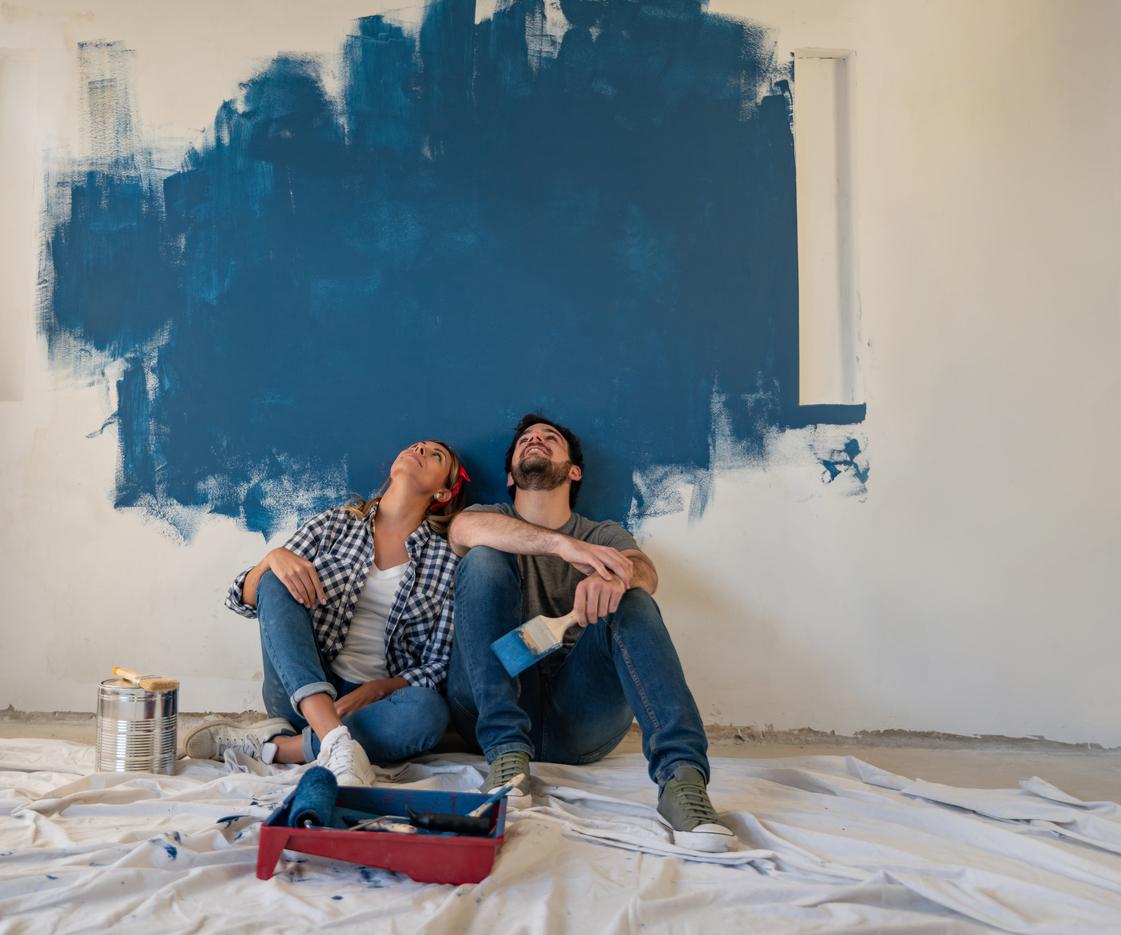What ecological materials to renovate your interior while respecting your health?
Want to freshen up your interior? Good idea, provided you opt for healthy materials that emit as few harmful substances as possible. Advice from our experts for a nest where it is good to breathe.
We don't see them, we don't feel them for the most part: "And yet, if we do not take precautions, many harmful compounds emitted by materials and decoration products can contribute to the poor quality of the indoor air", underlines Souad Bouallala, Air Quality engineer at Ademe.
In recent years, several regulatory measures have forced manufacturers to make efforts to eliminate or limit some of these substances in their products and, since September 2013, to affix an "indoor air emissions" label to them. This labeling, which ranges from A+ (very low emissions) to C (high emissions), takes into account total volatile organic compounds (TVOC) and around ten individual substances, including formaldehyde.
So good news? Yes, because it helps guide consumer choice. But...
Which paint is the least harmful?
Which is the healthiest floor covering?
Hard floors
Tile remains the "best pupil" in terms of emissions. With an essentially mineral composition, it emits very few, if any, VOCs. Great too :
Some wooden floors proudly announce an E1 classification, a standard which imposes limited formaldehyde emissions, which leaves Dr. Squinazi cautious: "The reference value retained by this standard, i.e. 124 μg/m3 of air, is less demanding than that of the A+ label, i.e. 10 μg/m3." In other words, it is not really a guarantee of sanitary quality!
Flexible floors
Prefer real linoleum, made up largely or entirely of vegetable raw materials (linseed oil, wood flour, jute, natural resins). Not to be confused with the synthetic coatings abusively called "lino", based on PVC containing phthalate-emitting plasticizers, and which it is therefore preferable to avoid.

Note however: some manufacturers now offer phthalate-free vinyl or PVC coverings (Tarkett, Forbo, etc.).
Choosing a plant covering
Another interesting choice: coverings made of woven plant fibers (sisal, coconut, seagrass), making sure that the underlay on which they are are fixed either of natural origin (latex, felt, jute...) and not synthetic
What is the best type of wallcovering?
What is the least toxic glue?
"Even if we use little of it, glues emit a lot of VOCs, especially formaldehyde," says Souad Bouallala. For parquet and tiles, there are glues which, in addition to the regulatory A+, carry a more demanding label, but according to our survey, not those intended for wallpaper. The best is to go for glues of vegetable origin (wheat starch, cellulose, natural latex...) and/or those which mention the absence of solvents, VOCs, formaldehyde and synthetic resin.
How to renovate old furniture while limiting pollutants?
Old furniture has the advantage of emitting fewer VOCs than new ones. Nevertheless, a makeover requires some precautions. If you strip it: opt for paints or varnishes of vegetable origin (lactic acid, oils, etc.) without chlorinated solvents, acids, soda, potash, paraffin or preservatives, which can emit VOCs and other pollutants.
If you want to protect it: choose wood oils of vegetable origin, or water-based varnishes which limit the emission of solvents into the air. Choose those that carry the EN 71-3 toy standard.
Read alsoWhat are the most ecological insulation materials?
Insulation materials can contain irritating, allergenic or carcinogenic toxic substances: VOCs in insulating foams, biocides in certain insulations biosourced (made from materials from plants, animals or recycled products), particles and fibers from wool (mineral, plant or animal). However, as Ademe points out, there are no standards that can be used to confirm that a product is healthy or not. It is therefore best to favor those classified A+ and carrying an additional label.
Amateur handyman?
It is better to call on a professional because not only does the choice of insulation depend on many factors (place to be insulated, thermal and/or sound insulation, level of efficiency sought. ..), but if the installation is badly done, the problems of interior pollution can appear or worsen. Not to mention the possible presence of asbestos (floors, ceilings, etc.) in buildings built before 1997.
DIY and decoration: which eco-labels can you trust?
Blue Angel
Emicode® EC1 or EC1Plus
Gut®
Indoor Air Comfort
Natureplus®
Nordic Swann
Oeko-Tex® Standard 100
RAL Tapeten®
Tüv Süd
Excel and Excell+ green zone
The European Ecolabel and NF environment, a plus?
Yes. "Virtuous" for the environment, these labels do not consider emissions, but restrict the content of VOCs and other dangerous substances in the composition.
Read alsoAuthor: Emmanuelle Blanc, Health journalistOur experts: Souad Bouallala, Air Quality Engineer at Ademe (Ecological Transition Agency) & Dr Fabien Squinazi, biologist, member of the High Council for Public Health Article published on







